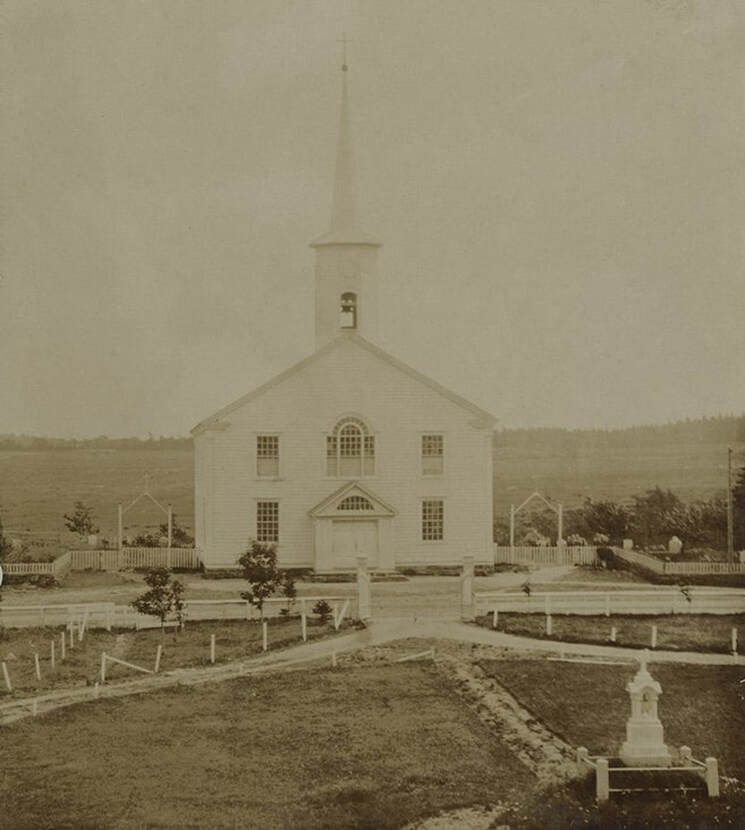|
After fleeing the French Revolution and making his way first to England and then to Clare, Nova Scotia, Father Sigogne served the Mi'kmaw and the poorest of the poor Acadian peoples of the Cap-Sable and Baie Sainte-Marie parishes, which he founded, from 1799 to his death in 1844. Through his application of "moral rigorism" upon the communities he served, his liberal use of the threat of excommunication as a means of discipline, his advocacy for the spiritual, educational and other temporal needs of Acadian and Mi'kmaw, and his staunch devotion to the communities he served until his death, for which Nova Scotia's provincial officials (if not always his parishioners) held him in high esteem, Father Sigogne left an indelible, and praiseworthy mark on the history of the area.  The site of the “big church” is now the location of the parish cemetery. Notice the monument across the road from the church. This is a monument to Father Jean-Mandé Sigogne whose remains were buried in front of what was at that time known as College Sainte-Anne. This college, which is now known as University Sainte-Anne, was, at the time, run by the Eudiste Priests and the college Rector was also the Pastor of the parish. Date: [ca. 1830] Reference: Musée Sainte-Marie As his personal correspondence attests, Father Sigogne was notably distressed about the level of contempt his parishioners had for their mixed-blood brethren, who were the offspring of intermarried Acadian and Mi'kmaw parents. As noted in his biography, Father Sigogne's attempts to address the problem within the community did not succeed, and later he would rely upon social mechanisms such as intermarriage and the passage of time, to lessen, if not eliminate altogether, this long-standing prejudice. References:
Also link to: Association des Acadiens-Metis Souriquois blog site: https://acadiens-metis-souriquois.ca/aams-blog/news-and-reflections-ancient-place-names-close-to-home-baie-sainte-marie-clare-march-18-2023
Comments are closed.
|
Archives
June 2025
Category
All
|

 RSS Feed
RSS Feed


